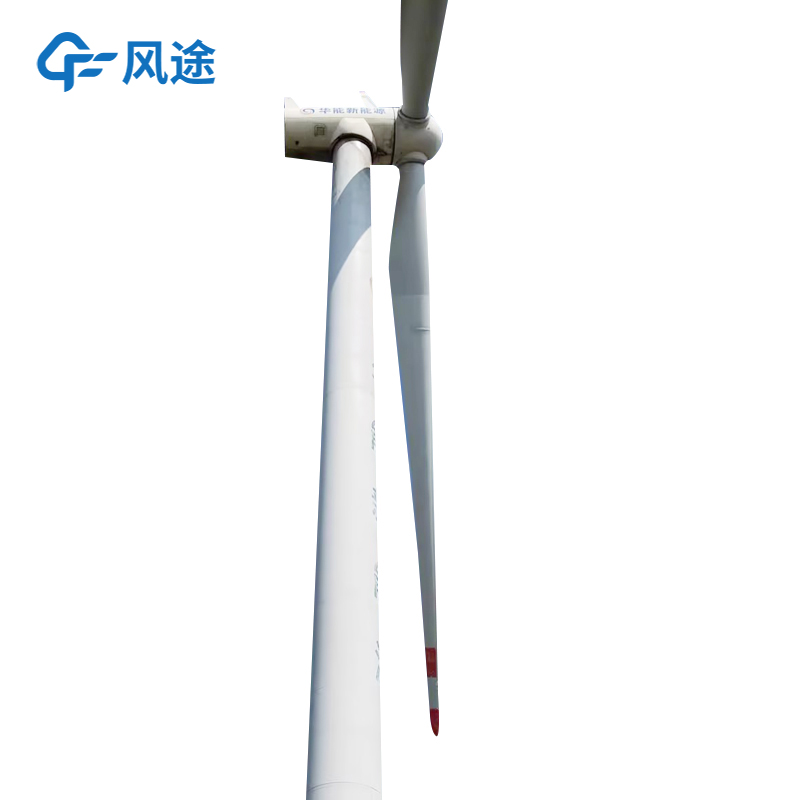Tianyi Sensor IOT Technology Co., Ltd
Sales Manager:Ms. Emily Wang
Cel,Whatsapp,Wechat:+86 15898932201
Email:info@fengtutec.com
Add:No. 155 Optoelectronic Industry Accelerator, Gaoxin District, Weifang, Shandong, China

Sales Manager:Ms. Emily Wang
Cel,Whatsapp,Wechat:+86 15898932201
Email:info@fengtutec.com
Add:No. 155 Optoelectronic Industry Accelerator, Gaoxin District, Weifang, Shandong, China
time:2025-06-13 08:51:23 source:Weather Station viewed:192 time
Why Does Wind Power Generation Easily Encounter Icing Issues?
First, wind farms are mostly located in areas with abundant wind resources such as mountains and coastal regions, where harsh climatic conditions (high humidity, low temperatures) easily lead to weather phenomena like clouds, fog, and freezing rain. When the ambient temperature drops below the freezing point, supercooled water droplets will rapidly freeze upon impacting the blade surface.
Second, the characteristics of the blades themselves, such as their shape, material, and surface coating, play a role. If the blade surface is rough or uneven, water droplets are more likely to adhere and freeze.
Third, environmental factors matter. When a wind turbine is in operation, the blades collide with air containing supercooled water droplets. The impact disrupts the droplets' equilibrium, raising their freezing point and causing ice to form on the blade surface.
Icing Poses Serious Hazards:
First, icing alters the aerodynamic performance of blades. It reduces lift and increases drag, leading to a decrease in wind turbine output and power generation efficiency. In harsh areas, annual power generation losses can reportedly reach 20%-50%.
Second, icing increases blade loads and causes uneven load distribution, triggering unit vibrations, aggravating blade fatigue damage, shortening blade lifespan, and even potentially leading to severe accidents like blade breakage or unit collapse.
Finally, ice shedding poses safety threats to on-site maintenance personnel and surrounding equipment/people.
In view of these hazards, icing monitoring and early warning are essential.
FT-JB3H Detecting Ice on Wind-turbine Blades uses microwave detection technology. It distinguishes icing conditions by analyzing microwave signal feedback from different substances (ice, water, air) and can calculate ice thickness. With a detection resolution of up to 0.01mm and a maximum measurement thickness of 30.00mm, it accurately reflects the icing status on the blade surface. The sensor adopts wireless 433 communication, with a communication distance of over 100 meters, enabling convenient transmission of monitoring data to the control center. It operates in a temperature range of -40°C to 65°C and has an IP66 protection rating.
FT-JB3H Detecting Ice on Wind-turbine Blades also features multiple functions, including temperature detection, battery voltage detection, and charging voltage detection, to comprehensively monitor icing conditions and related environmental parameters.

Agriculture, as the foundation of human survival, is intricately linked to the weather. Weather conditions profoundly influence every aspect of agricultural production. During the sowing stage, seed germination requires suitable accumulated temperature, typically above 10°C. If the temp...
A handheld weather meter is a portable, hand-operated meteorological monitoring device capable of real-time measuring and recording multiple meteorological parameters. These devices integrate various high-precision sensors, suitable for field research, emergency monitoring, mobile observation, and o...
The FT-SQ6 electronic weather station is a professional meteorological measurement tool that integrates portability, accuracy, and durability, and it is also a reliable piece of equipment in the field of special firefighting. Its compact design and lightweight body make portability its main advantag...
Compared with traditional embedded sensors, the Road Condition Sensor has obvious advantages in practical applications. It adopts non-intrusive installation, which does not require damaging the road structure. The installation process is simple and convenient, which can greatly reduce the impact of...